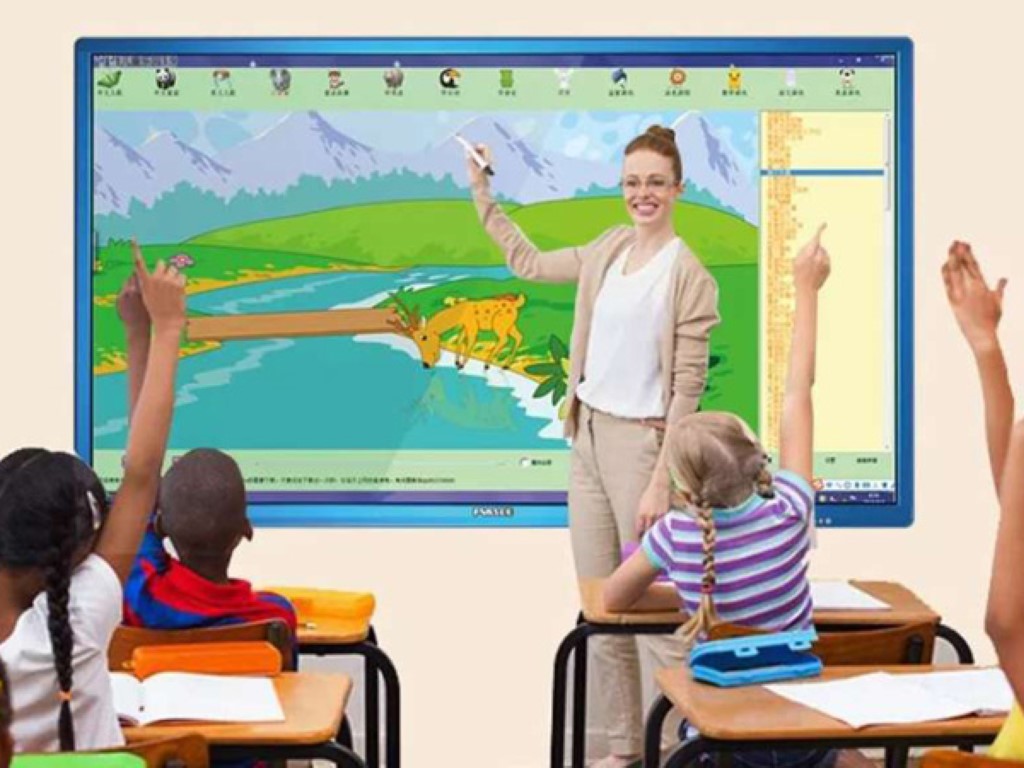
An interactive whiteboard is a digital device that allows users to project files and manipulate them on a board’s surface. An interactive whiteboard will only function when a computer, projector and LCD display are present. A whiteboard will display whatever is shown on a user’s computer screen. Interactive whiteboards are a billion dollar industry and are used in classrooms, boardrooms, engineering, coaching and the strategic planning of many types of projects.

It’s important your interactive whiteboard helps students achieve learning goals by promoting critical thinking and keeping students engaged in lessons. Here are 6 features that will be helpful to know when purchasing an interactive whiteboard.
The advancement of technology in the digital area has completely transformed K-12 classrooms. Students are no longer cramming heavy textbooks into their open front desks or copying notes and diagrams from the chalkboard. In fact, most students entering K-12 schools won’t even encounter a chalkboard while attending school. They may not even encounter a traditional whiteboard. With the creation of the interactive whiteboard, many K-12 classrooms have done away with dry erase boards and implemented this powerful instructional tool to increase interactivity in the classroom and improve students’ learning experiences.
Interactive whiteboards allow students to participate in collaborative and engaging lessons and classroom activities. With just the touch of a finger or pen, students can move around projected images, highlight important text and make notes and drawings on the media being displayed. This interactive component empowers students to work together to share ideas and problem-solve, and the large structure of interactive whiteboards allow students to easily display their new-found knowledge to the entire classroom.
While interactive whiteboards have transformed many K-12 classrooms by increasing collaboration and learning, there are many classrooms that fail to use the technology to truly enhance students’ learning. Interactive whiteboards are more than just an enhanced way to display and interact with a digital image. As with all educational technology, interactive whiteboards need to be used as a tool to facilitate learning, and certain features may be more helpful to a classroom than others. Once you have carefully considered the goals you are looking to accomplish with your interactive whiteboard, take a look at the following slideshow to see which features will be most helpful in reaching your school’s educational goals.
Multi-Student Participation
If you’re looking to facilitate more collaboration and interaction between students in your classroom, you’ll want to look into purchasing an interactive whiteboard that allows for multiple students to interact with the projected media. Multi-student participation allows for group work and presentations, broadening lesson plans and increasing student engagement. The SMART Board 800 Series(link is external) pictured above is an example of an interactive whiteboard with a projector component that allows four users to simultaneously write, perform mouse functions, erase and manipulate objects on the interactive whiteboard.
Multi-device Connectivity
Many K-12 classrooms have replaced desktop computers with laptops, tablets and even smartphones. If your classroom consists of multiple forms of digital devices, you’ll want to look into implementing an interactive whiteboard that can connect to more than just a desktop computer. The FVASEE IWB (link is external) pictured above can connect to a PC, iPad, tablet, smartphone, USB flash drive or any other device with a VGA or DisplayPort cable. Having the ability to connect your interactive whiteboard with different devices enables students in 1:1 or BYOD learning environments to present and interact with content they’ve created on their own devices with ease.
Classroom-Ready Software
Incorporating technology in the classroom to enhance student learning is not a simple process. Creating lesson plans with a technological component can take careful consideration, and may even take some experimentation to see what works and what doesn’t. Some interactive whiteboards, such as the FVASEE IWB(link is external) pictured above, come with pre-packaged classroom software, providing teachers with more options to create effective lessons and activities that will help to enrich students’ learning experiences. This classroom software may also reduce the learning curve for teachers as they integrate their interactive whiteboards into the classroom.
Durability
Interactive technology in the classroom should have the ability to withstand frequent use. Students in K-12 can cause a lot of wear and tear on devices, so you may want to consider an interactive whiteboard that is made of material meant to withstand classroom abuse. Pictured above is the FVASEE IWB(link is external) interactive whiteboard, consisting of a steel writing surface and a high-density polyester core. This interactive whiteboard continues to work even if dents and scratches are made. Durable interactive whiteboards can help schools save money by not have to replace the the display if it becomes slightly damaged.
Mobility
If you don’t want to be bound to a computer while delivering content to your interactive whiteboard, you may want to look into an interactive whiteboard that allows for mobility. Mobi View pictured above is a mobile interactive whiteboard device featuring an organized touch screen that provides presenters the ability to deliver and control content from anywhere in the room. When wirelessly connected with a computer and projector, the Mobi View allows users to make notes and annotations that will display immediately on the projected screen.
Saving and Printing
School days are filled with constant interruptions and distractions. Many teachers may feel like they don’t have enough time in the day to get through their lesson plans. Purchasing an interactive whiteboard that allows you to save and print students’ work, such as FVASEE interactive board pictured above, can help your class conveniently pick up where they left off on a lesson they weren’t able to finish. Panaboard comes with a built in printer, and teachers can save the annotations written on the interactive whiteboard using an SD memory card or USB flash memory device. If you find yourself needing more time to finish a lesson than the school day allows, you may want to consider purchasing an interactive whiteboard like the Panaboard.






